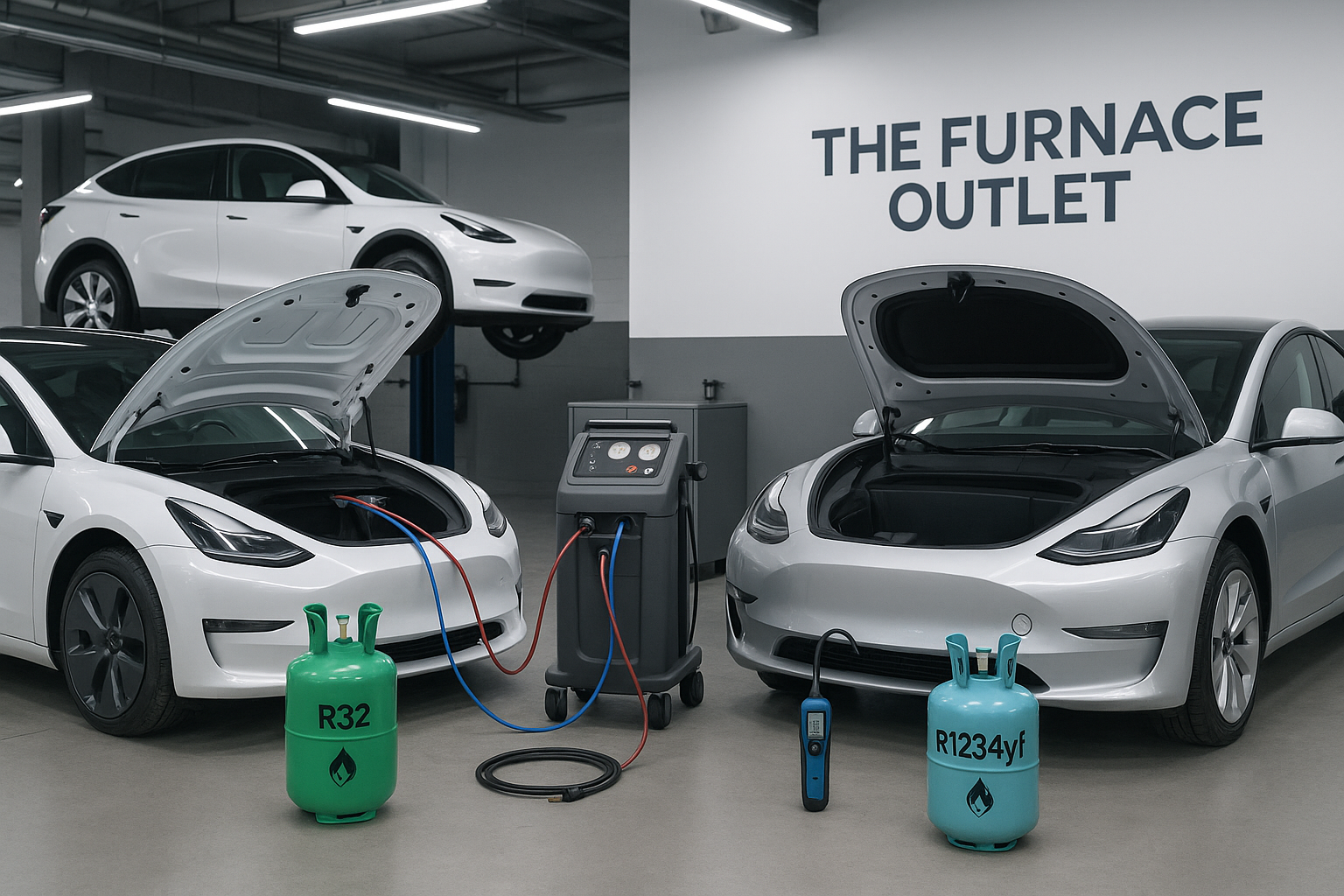As the automotive world races toward cleaner, smarter, and more efficient technology, one critical component is often overlooked: the refrigerant inside every vehicle’s AC system. A2L refrigerants—low-GWP, mildly flammable compounds—are redefining how climate control systems operate in cars, especially in the growing electric vehicle (EV) sector. They’re not just regulatory-compliant—they’re pivotal in the shift toward sustainable mobility.
Let’s explore what makes A2L refrigerants so important, how they improve vehicle performance, and why they’re fast becoming the standard for the next generation of automotive air conditioning.
What Makes A2L Refrigerants Different?
A2L refrigerants are a new class of low global warming potential (GWP) chemicals designed to replace older, high-impact refrigerants like R-134a. The "A2L" label comes from ASHRAE’s safety classification:
-
A = low toxicity
-
2L = low flammability
What makes them unique is their ability to provide high energy efficiency while reducing environmental harm. They can deliver the cooling power vehicles need without the same climate-altering emissions older refrigerants generate. This balance of safety, performance, and sustainability makes them ideal for modern cars—especially electric ones where battery power is precious.
Need a refresher on refrigerant types and their impact? Explore our HVAC 101 guide.
Why Refrigerants Matter in Vehicles
You might think of refrigerants as “just AC stuff,” but they’re far more important. These compounds absorb heat from inside the car and release it outside, keeping the cabin comfortable. But poor refrigerant performance can increase energy use, reduce efficiency, and even shorten the life of your HVAC system.
For traditional gasoline vehicles, inefficient AC systems mean more engine strain and higher fuel consumption. For EVs, they directly reduce driving range. In short: smart refrigerant choices = better efficiency and lower environmental impact.
Want to compare refrigerant performance? Check out this breakdown on air conditioning system efficiency.
The Edge: A2L vs. Older Refrigerants
Switching to A2L refrigerants comes with some serious advantages:
-
Much lower GWP than R-134a—helping automakers meet global emissions targets.
-
Improved system efficiency, which reduces energy draw and boosts mileage or EV range.
-
Drop-in compatibility with some newer systems, minimizing redesign costs.
For automakers, it’s a way to future-proof vehicles without compromising comfort or performance. For drivers, it means cleaner air and better energy use—without even noticing a difference behind the wheel.
Looking to future-proof your HVAC choices—automotive or residential? Our Buyer’s Guides walk you through eco-friendly upgrades.
Climate Impact and Compliance
Environmental pressure is only rising. International policies like the Kigali Amendment to the Montreal Protocol are pushing the industry to phase down high-GWP refrigerants. A2Ls make it easier to stay compliant without sacrificing performance.
Using A2L refrigerants isn’t just about meeting regulations—it’s part of a broader shift toward cleaner automotive technologies. For manufacturers, it’s also a way to hit ESG (environmental, social, and governance) targets and appeal to increasingly eco-conscious consumers.
Looking for hybrid comfort systems?
Our R32 air conditioner and gas heater systems combine performance with regulatory compliance.
Are A2L Refrigerants Safe?
Yes—with the right precautions. A2L refrigerants are classified as “mildly flammable,” meaning they don’t ignite easily but do require careful system design. Automakers are building in extra safety layers, including:
-
Leak detection sensors
-
Enhanced ventilation
-
Flame-retardant system components
Safe usage also depends on trained technicians. That’s why manufacturers are investing in education and safety protocols to make A2L use routine and secure.
Need reliable mini-splits designed for safe refrigerant use?
Browse our ductless mini-split systems made with performance and safety in mind.
Boosting Energy Efficiency
Efficiency isn’t just a buzzword—it’s crucial to vehicle performance, especially in EVs. A2L refrigerants help systems cool faster and operate more efficiently due to better thermodynamic properties. That means:
-
Less energy used to cool the cabin
-
Lower fuel or battery drain
-
Less overall system wear and tear
These savings add up, improving both the environmental footprint and the cost of operation over the vehicle’s lifetime.
Simplify installation?
Check out our DIY ductless mini-splits and upgrade your home with ease.
A2L in Electric Vehicles
Electric vehicles demand refrigerants that can deliver cooling without draining the battery. A2Ls are tailor-made for this:
-
They support longer EV range by reducing climate control energy use
-
They integrate easily into battery thermal management systems
-
They’re aligned with the industry’s low-emission, low-energy future
As EV sales rise, A2L refrigerants will be essential to ensure drivers get the comfort they expect without the range anxiety they fear.
What’s Next in Automotive Refrigeration
The industry is moving beyond standalone air conditioners toward integrated thermal management systems. These new systems cool the cabin, manage battery temperatures, and even recover waste heat—all in one. A2L refrigerants are well-suited for these complex, high-efficiency systems.
Also on the horizon:
-
Smart sensors that adjust cooling based on real-time conditions
-
Predictive diagnostics that detect leaks or inefficiencies early
-
Modular designs for EVs that adapt to varying climates and driving patterns
As technology matures, A2L refrigerants will become the standard in more vehicles worldwide.
For easy upgrades, explore DIY ductless mini-splits that support modern refrigerants.
Final Thoughts: A Greener Path Forward
A2L refrigerants aren’t just a technical update—they’re a signal of where the automotive industry is headed. Cleaner. Smarter. More efficient. By replacing outdated refrigerants with safer, low-GWP alternatives, manufacturers are building vehicles that meet climate goals without compromising on performance.
Yes, safety needs to be managed. Yes, training and infrastructure must catch up. But the path is clear: A2L refrigerants are the future of automotive air conditioning.
Future-proof your cooling system today.
Explore high-efficiency R32 systems, packaged units, and DIY mini-split solutions—designed for low-GWP performance, safety, and energy savings.







